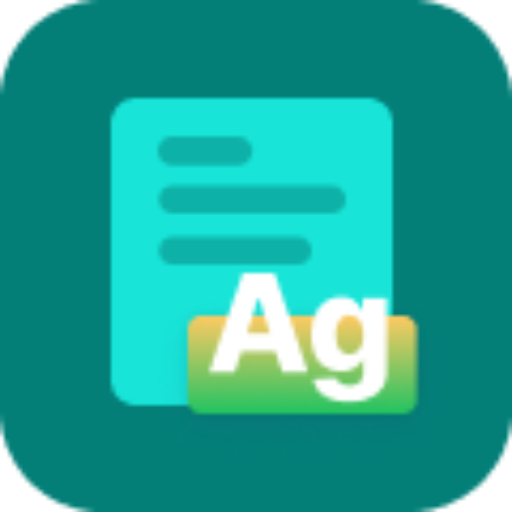Translate Chinese to Academic English 科研论文中翻英-Chinese to Academic English Translation
AI-powered Chinese to English research paper translation.
Related Tools
Load More
学术论文专家
专业论文撰写助手,具严格国际标准

中文论文降重
降低与原文的重复率

論文要約くん
落合陽一先生の論文読み方フォーマットで論文を分かりやすく解説してくれます。論文を全文読み、詳細な解説を提供します。プロンプトはいりません、PDFかURLを送るだけです。

论文小帮手
An academic paper assistant offering guidance on writing, research, and citations.

学术论文翻译
将专业学术论文翻译成浅显易懂的文章

科技论文翻译助手
我是科技论文翻译助手,专业中译英的论文翻译家。
20.0 / 5 (200 votes)
Introduction to Translate Chinese to Academic English 科研论文中翻英
Translate Chinese to Academic English 科研论文中翻英 is a specialized tool designed for accurately translating scientific research papers from Chinese to English. The main goal is to maintain the academic rigor and stylistic consistency of English scientific literature while ensuring the translation is precise and clear. This tool is particularly useful for non-native English-speaking researchers who need to publish their work in international journals. For example, a Chinese researcher working on a paper about quantum physics can use this tool to translate their manuscript into high-quality English, ensuring that the scientific content is conveyed accurately and professionally.

Main Functions of Translate Chinese to Academic English 科研论文中翻英
Direct Translation
Example
Translating a section of a research paper on nanotechnology from Chinese to English.
Scenario
A researcher writes a detailed section on experimental methods in Chinese and uses the tool to translate it into English, ensuring the terminology and methods are accurately described.
Issue Identification
Example
Highlighting awkward phrases or ambiguous terms in a translated biology research paper.
Scenario
After translating a paper, the tool identifies non-native expressions and unclear terms, providing explanations on why these might be problematic and suggesting revisions.
Reinterpreted Translation
Example
Improving the flow and readability of an English-translated chemistry paper.
Scenario
Based on the direct translation and identified issues, the tool reinterprets the text to ensure it adheres to the conventions of English scientific writing, making it more comprehensible for the target audience.
Ideal Users of Translate Chinese to Academic English 科研论文中翻英
Non-native English-speaking Researchers
Researchers who are proficient in Chinese but need to publish their work in English. They benefit from accurate translations that maintain the academic quality of their original work, making their research accessible to a wider international audience.
Academic Institutions
Universities and research institutes that support their staff and students in publishing internationally. These institutions can use the tool to provide additional resources for their researchers, ensuring that language barriers do not hinder the dissemination of their work.

How to Use Translate Chinese to Academic English 科研论文中翻英
Step 1
Visit aichatonline.org for a free trial without login, also no need for ChatGPT Plus.
Step 2
Prepare the Chinese text that you need translated, ensuring it is in Markdown format.
Step 3
Input the Chinese text directly into the designated field on the website.
Step 4
Review the direct translation provided and note any issues or areas for improvement.
Step 5
Use the feedback provided to refine the translation into a polished academic English version.
Try other advanced and practical GPTs
Ins tagram Hashtag Generator
AI-powered hashtags for social media success

Slogan Generator
AI-Powered Slogans for Every Brand

AI Email Writer
Smart Email Drafting with AI Power

Acronym Generator
AI-powered acronym generation made easy

Speech Generator
Crafting speeches with AI precision

AI Book Writer
Effortlessly create with AI writing power

AI算命Plus
Your Personalized Bazi Analysis Tool

Natural Language Prompts
AI-powered prompts for clear communication

YourArtist
AI-powered song creation made simple.

Assistants to structured prompts
AI-Powered Prompts for Precise Queries
Productivity Pal
Boost Your Productivity with AI-Powered Guidance
Midjourneyy Prompt Assistant
AI-powered tool for perfect prompts.

- Academic Writing
- Scientific Papers
- Thesis Translation
- Research Translation
- Article Translation
Frequently Asked Questions about Translate Chinese to Academic English 科研论文中翻英
What is the main function of Translate Chinese to Academic English 科研论文中翻英?
The main function is to accurately and academically translate Chinese research papers into English, maintaining the style and rigor consistent with scientific publications.
Do I need to have a ChatGPT Plus subscription to use this tool?
No, you do not need a ChatGPT Plus subscription. You can access the tool for free by visiting aichatonline.org.
What are the common use cases for this tool?
Common use cases include translating research papers, academic articles, theses, and other scientific documents from Chinese to English.
How does the tool ensure the translations are suitable for academic use?
The tool follows a three-step process: direct translation, identification of issues, and reinterpretation to align with academic standards.
Can the tool handle complex scientific terminology?
Yes, the tool is designed to accurately translate complex scientific terminology, ensuring that the meaning and context are preserved.